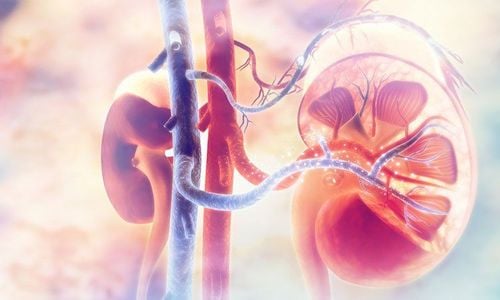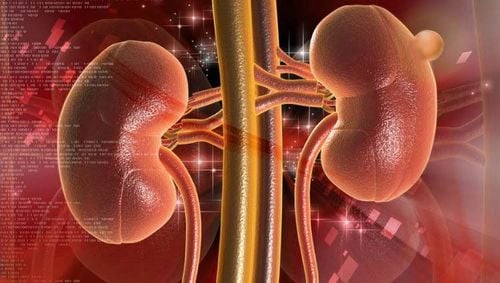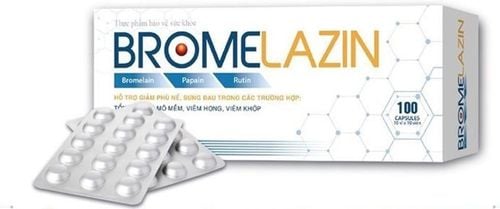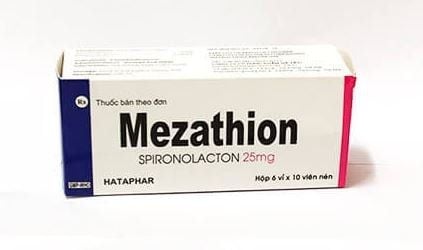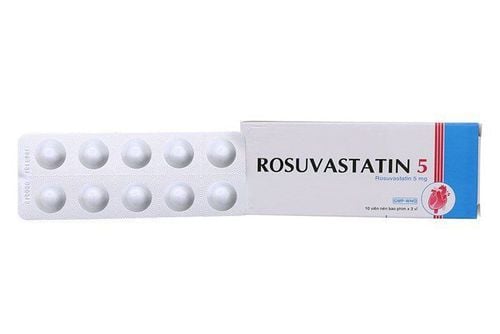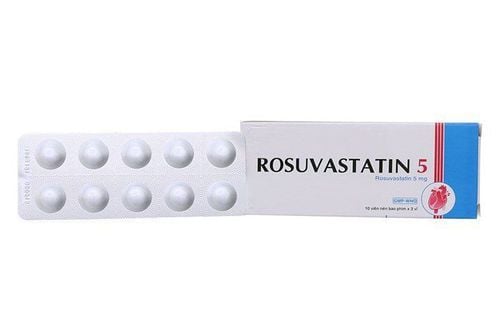This is an automatically translated article.
The article is professionally consulted by a doctor of the Department of Diseases & Internal Medicine, Vinmec Nha Trang International General Hospital.
Nephrotic syndrome is at risk of occurring after infection, medication, pregnancy toxicity. Treatment of nephrotic syndrome often cannot be completely cured because the disease recurs many times. The goals of treatment are to reduce symptoms, prevent complications, prolong remission, and slow kidney damage.
1. Is nephrotic syndrome dangerous?
For nephrotic syndrome, the kidneys will not be able to work properly, resulting in a large amount of protein in the blood being lost and appearing in the urine. Protein loss can cause a variety of problems such as:
Edema: Hypoproteinemia can lead to a decrease in the pulling force and water retention from the interstitial tissues into the vessel lumen, causing fluid retention in the interstitium, after results in edema. This condition usually develops around the eyes, insteps - legs and then to the rest of the body. Infections: Certain special proteins in the blood act as antibodies, helping the body fight infections. With nephrotic syndrome, these proteins are lost, patients (especially children) are susceptible to infections, often feel tired, sick, eat less. Changes in the urine: Sometimes an increased amount of protein in the urine can cause the urine to become cloudy, like foam, and some patients will urinate less than usual for the duration of the illness. Blood clots: Proteins that play an important role in preventing the formation of blood clots in the body are likely to be lost in the urine in patients with nephrotic syndrome. This leads to an increased risk of blood clots, which are dangerous to heart health.
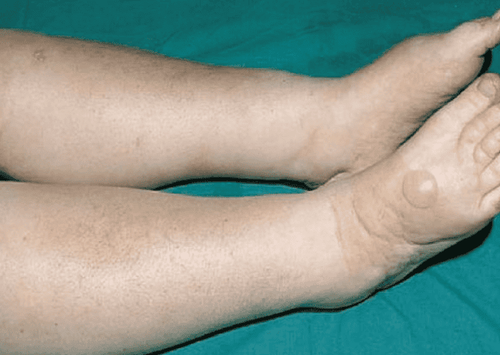
Phù chân là một trong những biểu hiện của hội chứng thận hư.
2. Diagnosing nephrotic syndrome
2.1. Criteria for diagnosing nephrotic syndrome Signs of edema Proteinuria higher than 3.5 g in 24 hours Blood protein less than 60 g/liter, accompanied by blood albumin less than 30 g/liter Hypercholesterolemia from 6.5 mmol /liter or more Birefringent fat particles, fatty deposits appearing in the urine In which, criteria 2 and 3 are required for the diagnosis of nephrotic syndrome, the remaining criteria may be incomplete.
2.2. Clinical diagnosis of nephrotic syndrome alone: When fully determining the diagnostic criteria for nephrotic syndrome, there is no accompanying manifestation of hypertension, hematuria or renal failure. Nephrotic syndrome is not alone: In addition to the diagnostic criteria for nephrotic syndrome, there is also the presence of hypertension, gross or microscopic hematuria, or concomitant renal failure. 2.3. Diagnosing nephrotic syndrome by etiology The following causes of primary nephrotic syndrome:
Minimal change glomerular disease Membranous glomerulonephritis, which is a common cause of nephrotic syndrome in adults in developing countries. Localized focal glomerular fibrosis Proliferative membranous glomerulonephritis Mesenchymal proliferative glomerulonephritis Extravascular proliferative glomerulonephritis As for causes of secondary nephrotic syndrome, these include: Due to drug use, toxins, autoimmune diseases, malignancies, infections and parasites, genetic diseases, metabolic disorders,...
2.4. Histopathological diagnosis Minimal change glomerulonephritis Membranous glomerulonephritis Thin, focal glomerulonephritis Membranous glomerulonephritis Membranous glomerulonephritis Membranous glomerulonephritis Extravascular proliferative glomerulonephritis 2.5 . Complications Nephrotic syndrome has the following complications:
Infections: Acute or chronic infections occur, especially cellulitis and peritonitis are common. Thrombosis (thrombosis): Includes acute or chronic renal vein occlusion, venous and peripheral arterial occlusion (including iliac and splenic vein occlusion) or, rarely, pulmonary embolism. Electrolyte disturbances Acute renal failure Malnutrition Complications from drug use: Usually due to prolonged use of corticosteroids, other immunosuppressive drugs or diuretics. Chronic kidney failure.
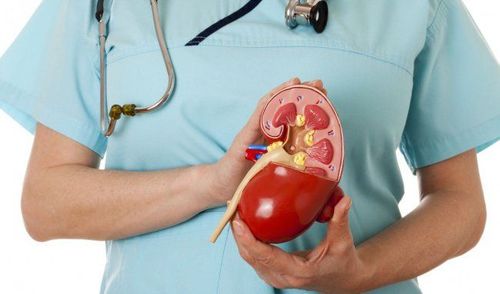
Việc chẩn đoán hội chứng thận hư có thể dựa vào nhiều tiêu chí khác nhau
3. Can nephrotic syndrome be cured?
Nephrotic syndrome is a chronic disease with sudden onset and episodes. Treatment will lead to complete remission. However, due to the often recurrent nature of the disease, long-term follow-up is required for many years and the patient should adhere to the outlined treatment regimen.
Treatment goals are to relieve symptoms, prevent complications, prolong remission, and slow kidney damage.
4. Treatment methods for nephrotic syndrome
4.1. Specific treatment Using corticosteroid therapy: For the first outbreak, in the attack phase, use prednisolone (corticoid group). If the patient responds to treatment (24-hour urinalysis does not show proteinuria, or if it is only traces), continue treatment with prednisolone every other day for 4 to 6 weeks, then gradually reduce the dose. .
However, patients must remain on prednisolone for as long as indicated for years. If the patient does not respond to prednisolone, a kidney biopsy should be performed and based on histopathological findings to guide further treatment.
In the treatment of relapses, with less recurrence (less than 1 time within 6 months), the same treatment is applied as with the first episode. In case of frequent relapse (with 2 or more relapses in 6 months) or corticosteroid-dependent: Use the same loading dose as the first course until the proteinuria disappears. The patient was then required to take a prolonged maintenance dose and tapered off the dose for up to a year.
Immunosuppressive drugs are used in the treatment of nephrotic syndrome or relapse, dependence, drug resistance or manifestations of toxicity to corticosteroids.
4.2. Symptomatic Treatment In the early stages of a patient with nephrotic syndrome unresponsive to treatment, symptomatic measures may be necessary at this time and these are the only nephrotic syndrome treatments. for patients with persistent disease unresponsive to any specific treatment. Symptomatic treatment options for this case will be:
Reduce edema: During the severe edema phase, the patient should pay attention to absolute light eating. In the less edematous phase, it is only necessary to eat relatively lightly, on average, an average person eats about 4g to 6g of sodium per day, equivalent to about 15g of salt (about 3 teaspoons). Eating relatively light is when adding about 5g of salt every day, note that even in fish sauce, main noodles also contain a certain amount of salt. Take diuretics as prescribed by your doctor. Compensate for protein for the body by increasing protein in food (the average person needs to eat about 200g of lean meat per day, patients with nephrotic syndrome need to add about 300g/day). Plasma transfusion, albumin is considered the best (albumin transfusion when blood albumin test is less than 10 g/l). Hypotension: A decrease in mean blood pressure or at least a decrease in systolic blood pressure has a renal protective effect. The group of antihypertensive drugs often chosen by doctors is the ACE inhibitor group, because according to research, this group of drugs can reduce proteinuria. Use antibiotics when there is an infection. Other drugs, including: Vitamin D2, calcium, trace elements... to limit the side effects of corticosteroids and the consequences of proteinuria. In addition, during the treatment of nephrotic syndrome, some tests are necessary, including 24-hour urinalysis, weight measurement, blood pressure, body temperature, 24-hour proteinuria test, and urea measurement. blood, serum creatinine, complete blood count.
At Vinmec International General Hospital, there is a package of urological examination and screening to help customers detect diseases early and have effective treatment and prevent dangerous complications. When choosing the package of urological examination and screening at Vinmec, customers will receive:
Urological specialist examination Urinary system ultrasound Total PSA quantification Free PSA measurement Urine culture To help early detection possible urinary tract infections. Especially prostate diseases (benign prostatic hypertrophy, prostate cancer) and urinary stone pathologies.... thereby helping customers to take preventive measures.
Please dial HOTLINE for more information or register for an appointment HERE. Download MyVinmec app to make appointments faster and to manage your bookings easily.




